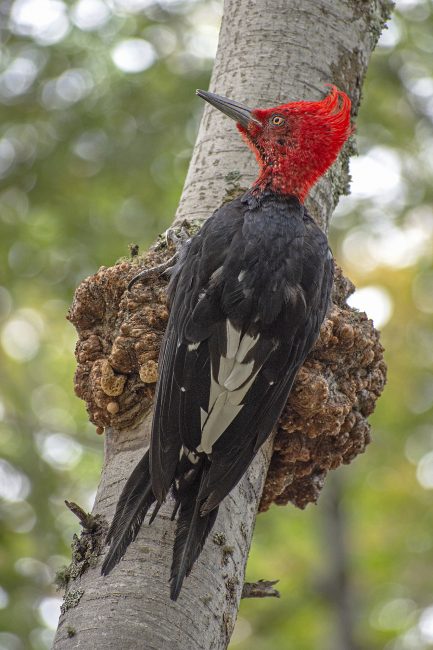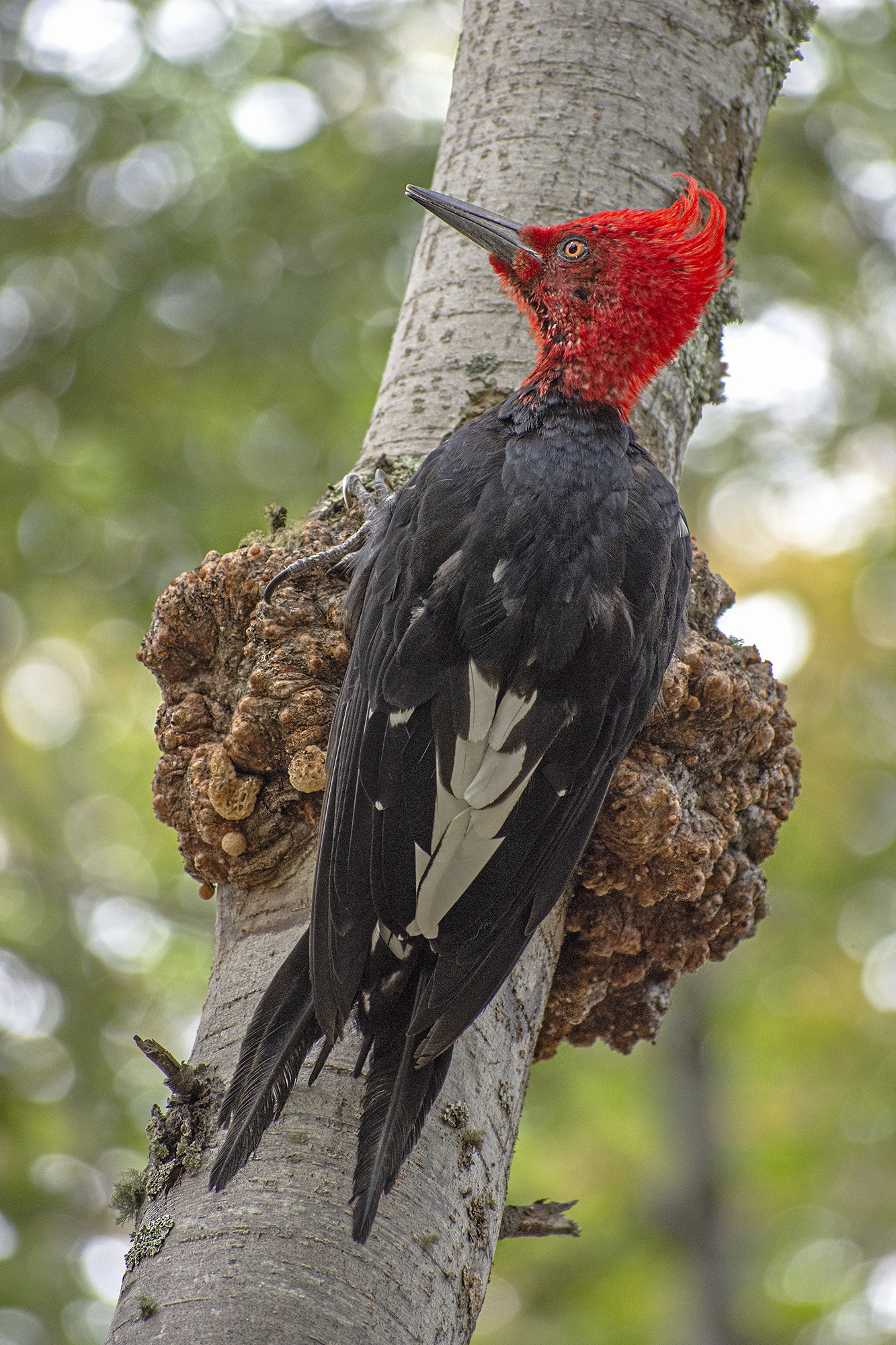
October 2, 2023
Beak Up, Beak Down
- as seen by -
 Martin Brogger
@tinchobrogger
Martin Brogger
@tinchobrogger Magellanic woodpeckers (Campephilus magellanicus) are woodpeckers found in southern South America. They are one of the largest woodpecker species in the world, with an average length of 18-20 inches (45-50 centimeters) and a weight of 11-14 ounces (300-400 grams).
Magellanic woodpeckers have distinctive black-and-white plumage, with large red crests on their heads. They are found in temperate forests, especially in the Andes mountains and the southern beech forests of Chile and Argentina. They are known for their loud, far-carrying calls, which they use to communicate with other members of their species and to establish territories.
Like other woodpeckers, Magellanic woodpeckers have unique anatomies that allow them to drill into trees and extract insects from the wood. Their strong, chisel-like bills and long, barbed tongues allow them to reach deep into tree trunks and branches to find food.
Despite their size and powerful bills, Magellanic woodpeckers are not aggressive birds and are generally solitary in their habits. They are also considered to be a keystone species in their habitat, as their activities create cavities in trees that provide nesting sites for other birds and shelter for other animals.
Magellanic woodpeckers are listed as Least Concern by the IUCN Red List of Threatened Species, although their population is decreasing due to habitat loss and degradation, as well as hunting and trapping in some areas. Conservation efforts are currently underway to protect their habitat and raise awareness about the importance of these birds in their ecosystem.
Nikon




Leave a Comment